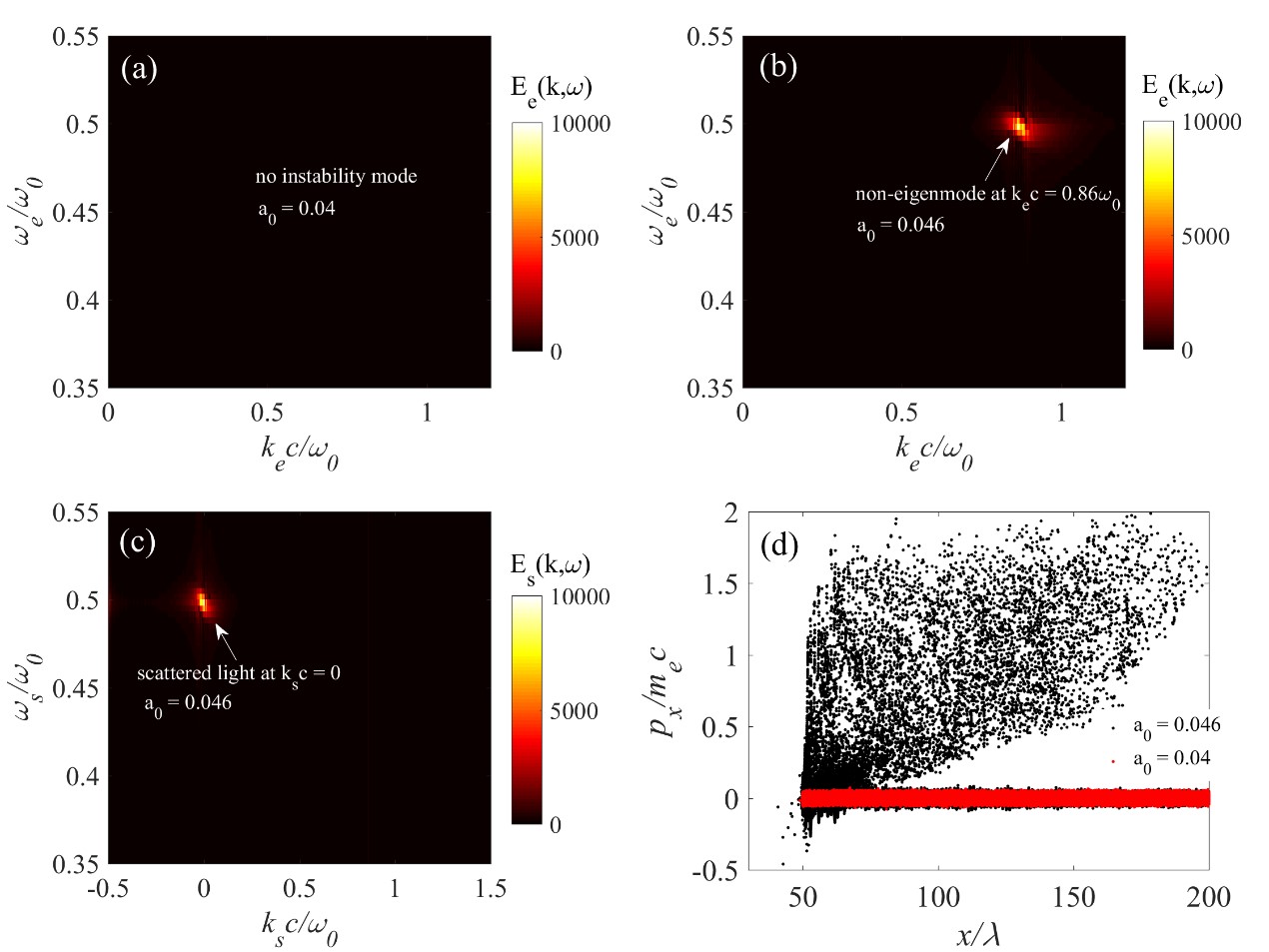Laser plasma instabilities (LPI) are among the major obstacles to the ignition of inertial confinement fusion (ICF) as they usually cause asymmetric and insufficient drive and preheating. The unclear understanding of LPI leads to the underestimation of the energy loss, and stimulated Raman scattering (SRS) is one of the major mechanisms in laser plasma interactions. Therefore, the study of SRS is critical to the ICF campaign.
Generally, stimulated Raman scattering (SRS) is developed below 0.25nc, where nc is the critical density for the pump laser. In this regime, only eigen electrostatic mode can be developed. As a collective oscillation of driven electrons, the frequency of eigenmode is called eigen frequency.
In a general nonlinear process, the couple of driven force and eigenmode will develop instability to sustain the resonance. The driven mode is independent from the external force other than quasi-mode and such intense nonlinear modes. The frequency of quasi-mode is determined by the intensity of driven force.
Recently, the research team from Shanghai Institute of Optics and Fine Mechanics, Chinese Academy of Sciences, found that, when the driven intensity is larger than a threshold, the intense laser could develop a non-eigenmode SRS in the density region ne > 0.25nc. The result was published in High Power Laser Sci. Eng.
In the experiment, this non-eigen electrostatic mode had a constant frequency which was around half of the pump laser frequency. Different from other nonlinear modes, the non-eigen frequency was independent from the eigen frequency and the drive force. The group velocities of non-eigen electrostatic wave and scattered light were almost zero.Therefore, electrostatic and electromagnetic solitons could be discovered in the plasma. This mechanism cost large amounts of laser energy in the laser direct-drive confinement fusion.
The research team also verified the theoretical mode via particle simulations, and the results are displayed in Fig. 1. They demonstrated that, when the laser intensity was larger than the threshold, non-eigen electrostatic mode could be developed.
This mechanism is expected to promote the understanding of plasma physics, nonlinear physics, nonlinear optics, and inertial confinement fusion.

Figure 1. The excitation of non-eigen electrostatic mode. (Image by SIOM)
Article website:
https://doi.org/10.1017/hpl.2020.22
Contact:
Dr. CAO Yong
Shanghai Institute of Optics and Fine Mechanics
Email: caoyong@siom.ac.cn